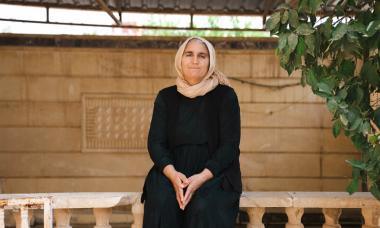
Tax Law Changes
Philanthropy is one of the most powerful ways to impact legacy—and upcoming changes to the U.S. tax code may shape how you choose to give.
The New Tax Law
Beginning January 1, 2026, rules from the new federal tax law (OBBBA) passed on July 4, 2025 will impact deductions, limits, and benefits for donors at every level. Whether you’re making a modest gift or considering a larger contribution, understanding these changes now can help you maximize both your impact and your tax savings.
7 Things You Need to Know
Changes to the tax code, beginning January 1, 2026, could affect how—and when—you choose to give to Women for Women International and other nonprofits.
What’s new:
- Tax benefit for non-itemizers
Even if you don’t itemize, you can deduct up to $1,000 (single filers) or $2,000 (married couples). So even smaller donations can make an impact.
➤ Note: Gifts to donor-advised funds (DAFs) are excluded. - New floor for itemizers
You will need to give at least 0.5% of your adjusted gross income (AGI) to claim a charitable deduction. For example, someone earning $200,000 per year will not be able to deduct the first $1,000 they give each year.
➤ Consider maximizing your giving in 2025 before the new rule takes effect. - New limit for top earners
Currently, top earners get a 37-cent tax benefit for every $1 deducted. Starting in 2026, that drops to 35 cents. If you are in the top tax bracket, consider giving more in 2025 to avoid losing tax benefits next year.
➤ Donors who intend to make gifts in 2026 and beyond or who are currently in multi-year pledges may want to consider "gift bunching" before the end of 2025. Gift Bunching is the practice of consolidating several years of giving into one calendar year. This approach increases the tax value of the gift.
What stays:
-
Income tax brackets
The new law permanently extends the current tax rates. -
Standard deduction
For 2025, it will be $15,750 for single filers and $31,500 for married couples filing jointly. If you don’t itemize, you may still benefit if you give appreciated stock, real estate, or, if you are 70½ or older, from your IRA (a Qualified Charitable Distribution QCD). -
Deduction limit for cash gifts
You can still deduct cash gifts of up to 60% of your AGI. Consider combining your cash and non-cash assets (often called blended giving) to maximize your tax benefits and impact. -
Estate and gift tax exemption
It will increase in 2026 to $15 million per individual and $30 million per married couple filing jointly. If your estate is under this amount, focus on current giving to receive tax benefits.
While tax laws may shift, the heart of giving remains the same: making a difference in the lives of war and conflict challenged women served by Women for Women International or impacting other charities. By planning ahead, you can ensure your generosity goes further—both for you and for the causes you care about most.
If you’d like to explore the best ways to give before the new rules take effect, reach out to Ramone Segree at 202-521-9665 or [email protected]. Together we can make 2025 and 2026 and beyond have lasting impact.
This information is not intended as legal or tax advice. For such advice, please consult an attorney or tax advisor. Figures cited in any examples are for illustrative purposes only. References to tax rates include federal taxes only. State law may further impact your individual results.





